Very Rare English Carriage Clock Signed Brockbank & Atkins London
Sold
Request Information
Follow Us
Very Rare English Carriage Clock Signed Brockbank & Atkins London
A very rare small nineteenth-century carriage clock signed and numbered on the silvered dial BROCKBANK & ATKINS LONDON 8542, c. 1830-1840. England
The extremely attractive engraved and gilt brass case of small proportions has four chased shaped columns on the corners with engraved panels to the sides depicting scroll and foliate motifs. The top and the bottom are embellished by thin rims, worked in a similar way as the four columns. At the back is a hatch with a button at the top and a hinge at the bottom, which, upon opening, reveals the backplate with a hairspring balance under a plain cock at the top, as well as two squares for winding and setting the hands half way down the middle. The backplate also bears the number of the clock No. 8542. Below the balance is a regulation pin with a calibrated silvered sector with the words ‘Fast’ and ‘Slow’ to facilitate regulation. The clock is surmounted by a lovely shaped carrying handle, having chased scrolls on both sides. The clock rests on four shaped feet.
The circular engraved and silvered brass dial is set in an engraved foliate gilt brass mask. It has a Roman chapter ring with five-minute and minute divisions. The time is indicated by a delicate pair of blued steel Breguet hands.
The eight-day single chain fusee movement is of excellent quality, with a lever escapement between the plates and the balance visible on the backplate. The rachet and rachet wheel for pre-setting the spring are situated on a separate subplate in the left bottom corner.
The makers, Miles Brockbank (1754-1821) and George Atkins (1767-1855), went into partnership in 1815 until 1850. In 1821 George’s son Samuel Elliot joined the business. The firm became famous for producing quality chronometers, but they also made all sorts of domestic clocks, as this very attractive carriage clock bears witness. The business remained active under the leadership of the descendants until just after WWI.
Condition
Good. Wear consistent with age and use.
Dimensions
Height: 4.93 in. (12.5 cm)
Width: 2.96 in. (7.5 cm)
Depth: 1.93 in. (4.9 cm)
Literature
B. Loomes, Watch and Clockmakers of the World, London, 2006, p.105.
J. Betts, Marine Chronometers at Greenwich, Oxford, 2017, p. 211, passim
PREVIOUSLY SOLD

19th Century Gilt-Brass Engraved Striking and Repeating Carriage Clock
19th Century Gilt-Brass Engraved Striking and Repeating Carriage Clock Sold Follow Us19th Century Gilt-Brass Engraved Striking and Repeating Carriage Clock The superb engraved gilt brass gorge case has facetted glass panels to all sides so...
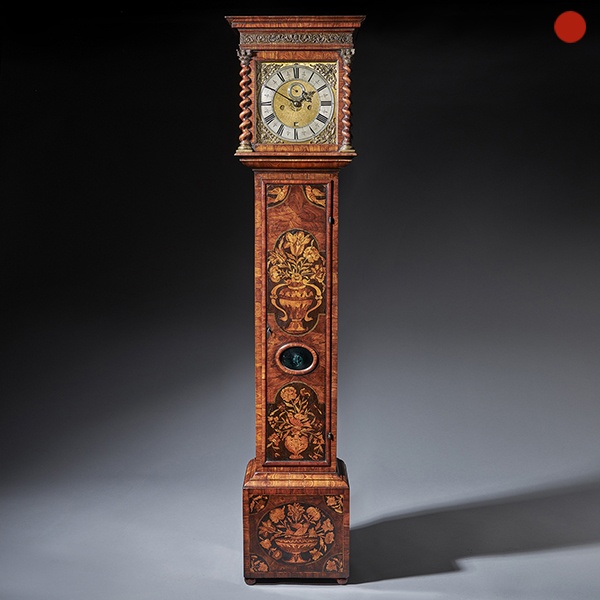
Important Charles II 17th Century Princes Wood and Marquetry Longcase Clock
Important Charles II 17th Century Princes Wood and Marquetry Longcase Clock SOLD Follow UsImportant Charles II 17th Century Princes Wood and Marquetry Longcase Clock A unique and important Charles II 17th century month-going Princes wood and...
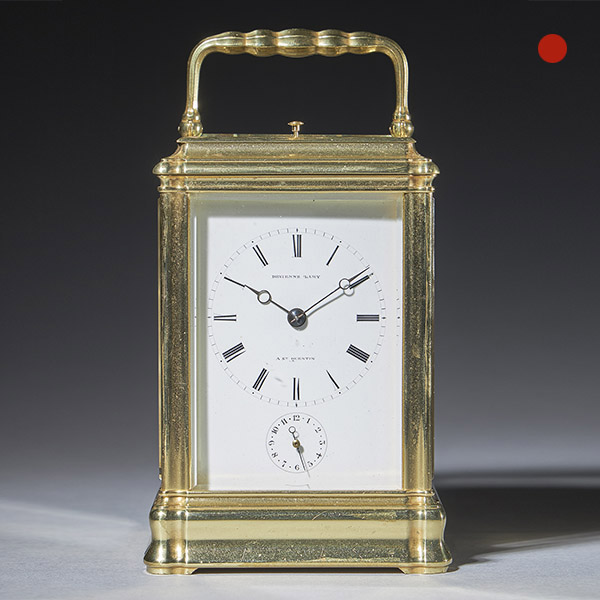
A Rare And Unusual 19th-Century Carriage Clock Signed Devienne Lamy A St Quentin, Circa: 1860
A Rare And Unusual 19th-Century Carriage Clock Signed Devienne Lamy A St Quentin, circa 1860. The gorge case has bevelled glass panels on all sides.
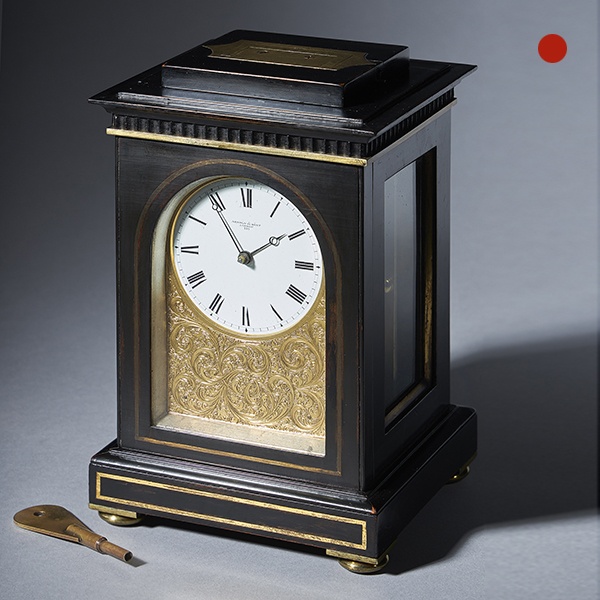
A Unique And Fine Mid 19th-Century Travelling Clock By Celebrated Makers Arnold & Dent, London
Unique and Fine Mid 19th-Century Travelling Clock By Celebrated Makers Arnold & Dent, London. The time is indicated by a fine pair of blued-steel Breguet hands.
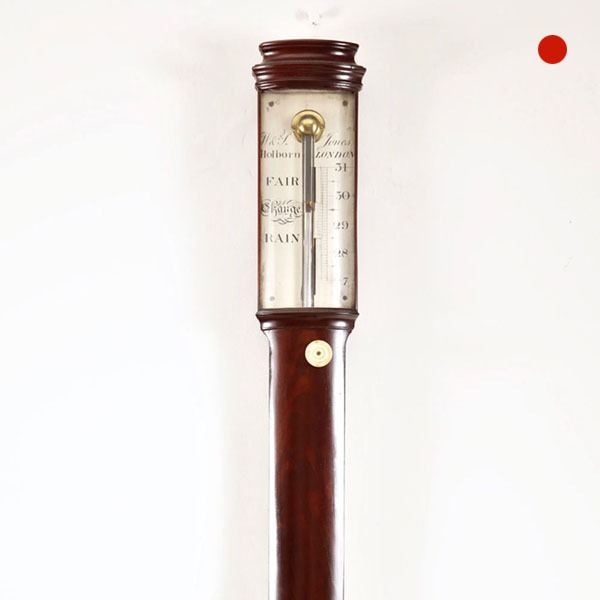
A fine 18th-Century George III mahogany bow-front stick barometer
The mahogany-veneered case has an austere form with only the moulded caddy top and the urn-shaped cistern cover to break its soberness. The silvered register plates are protected by a bowed glass, the recorder with vernier scale being operated by a knob below the register plate.

Large Mahogany 18th-Century Dial Clock, William Nicoll, London
The solid mahogany case has a moulded mahogany glazed door, which can be locked on the left-hand side. The original rectangular saltbox is permanently attached to the front and has doors to the side and the bottom.

19th Century Gilt-Brass Engraved Striking and Repeating Carriage Clock
19th Century Gilt-Brass Engraved Striking and Repeating Carriage Clock Sold Follow Us19th Century Gilt-Brass Engraved Striking and Repeating Carriage Clock The superb engraved gilt brass gorge case has facetted glass panels to all sides so...

Important Charles II 17th Century Princes Wood and Marquetry Longcase Clock
Important Charles II 17th Century Princes Wood and Marquetry Longcase Clock SOLD Follow UsImportant Charles II 17th Century Princes Wood and Marquetry Longcase Clock A unique and important Charles II 17th century month-going Princes wood and...

A Rare And Unusual 19th-Century Carriage Clock Signed Devienne Lamy A St Quentin, Circa: 1860
A Rare And Unusual 19th-Century Carriage Clock Signed Devienne Lamy A St Quentin, circa 1860. The gorge case has bevelled glass panels on all sides.

A Unique And Fine Mid 19th-Century Travelling Clock By Celebrated Makers Arnold & Dent, London
Unique and Fine Mid 19th-Century Travelling Clock By Celebrated Makers Arnold & Dent, London. The time is indicated by a fine pair of blued-steel Breguet hands.

A fine 18th-Century George III mahogany bow-front stick barometer
The mahogany-veneered case has an austere form with only the moulded caddy top and the urn-shaped cistern cover to break its soberness. The silvered register plates are protected by a bowed glass, the recorder with vernier scale being operated by a knob below the register plate.

Large Mahogany 18th-Century Dial Clock, William Nicoll, London
The solid mahogany case has a moulded mahogany glazed door, which can be locked on the left-hand side. The original rectangular saltbox is permanently attached to the front and has doors to the side and the bottom.
YOU MAY ALSO LIKE

A Rare Chinese Chippendale George III cabinet on stand, circa 1760 England
A Rare Chinese Chippendale George III cabinet on stand, circa 1760. England £38,000Follow UsA Rare...
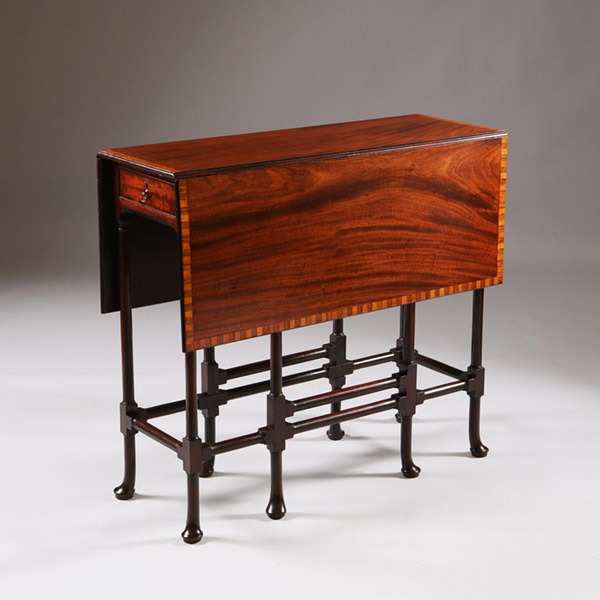
George III mahogany spider-leg table attributed to Thomas Chippendale 1768
A George III mahogany spider-leg table attributed to Thomas Chippendale 1768 £12,000Follow UsA...
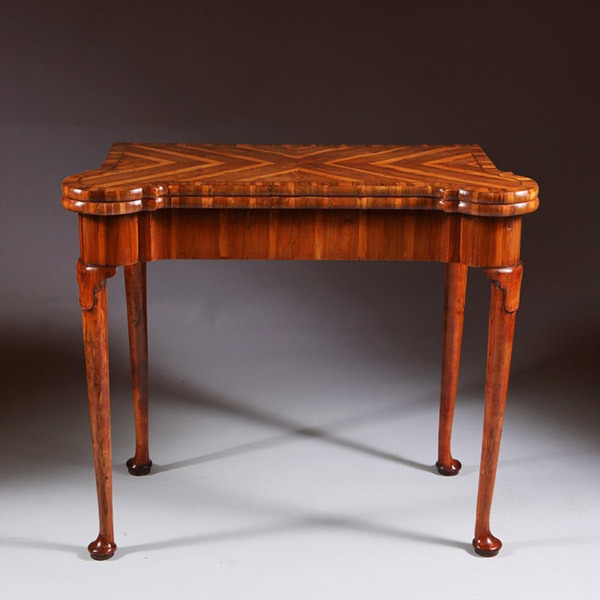
Museum Grade George I Cocus Wood Card Table, Circa 1725, England
Museum Grade George I Cocus Wood Card Table, Circa 1725. England £32,000Follow UsMuseum Grade...

A Rare and Important Charles II 17th Century Table Clock by Henry Jones
A Rare and Important Charles II 17th Century Table Clock by Henry Jones £85,000Follow UsA Rare and...
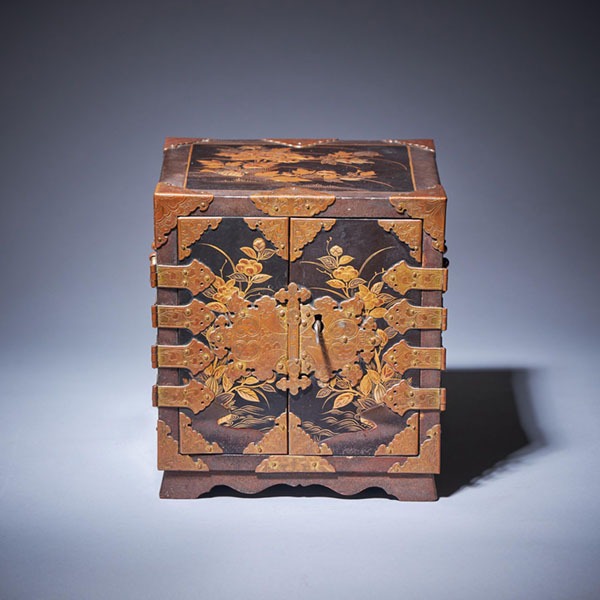
Important Early Edo Period 17th Century Miniature Japanese Lacquer Cabinet
Important Early Edo Period 17th Century Miniature Japanese Lacquer Cabinet £36,000Follow...

Fine Scottish Two-Day Marine Chronometer Signed and Numbered D. McGregor
Fine Scottish Two-Day Marine Chronometer Signed and Numbered D. McGregor £6,500Follow UsFine...

A Rare Chinese Chippendale George III cabinet on stand, circa 1760 England
A Rare Chinese Chippendale George III cabinet on stand, circa 1760. England £38,000Follow UsA Rare...

George III mahogany spider-leg table attributed to Thomas Chippendale 1768
A George III mahogany spider-leg table attributed to Thomas Chippendale 1768 £12,000Follow UsA...

Museum Grade George I Cocus Wood Card Table, Circa 1725, England
Museum Grade George I Cocus Wood Card Table, Circa 1725. England £32,000Follow UsMuseum Grade...

A Rare and Important Charles II 17th Century Table Clock by Henry Jones
A Rare and Important Charles II 17th Century Table Clock by Henry Jones £85,000Follow UsA Rare and...

Important Early Edo Period 17th Century Miniature Japanese Lacquer Cabinet
Important Early Edo Period 17th Century Miniature Japanese Lacquer Cabinet £36,000Follow...

Fine Scottish Two-Day Marine Chronometer Signed and Numbered D. McGregor
Fine Scottish Two-Day Marine Chronometer Signed and Numbered D. McGregor £6,500Follow UsFine...













